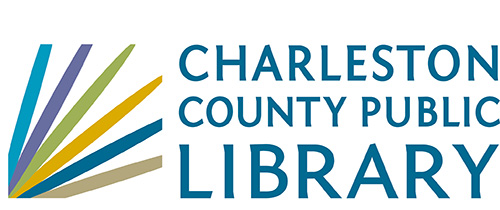Menu
×
John L. Dart Library
9 a.m. – 7 p.m.
Phone: (843) 722-7550
West Ashley Library
9 a.m. – 7 p.m.
Phone: (843) 766-6635
Folly Beach Library
Closed
Phone: (843) 588-2001
Edgar Allan Poe/Sullivan's Island Library
Closed for renovations
Phone: (843) 883-3914
Wando Mount Pleasant Library
9 a.m. – 8 p.m.
Phone: (843) 805-6888
Village Library
9 a.m. – 6 p.m.
Phone: (843) 884-9741
St. Paul's/Hollywood Library
9 a.m. – 8 p.m.
Phone: (843) 889-3300
Otranto Road Library
9 a.m. – 8 p.m.
Phone: (843) 572-4094
Mt. Pleasant Library
9 a.m. – 8 p.m.
Phone: (843) 849-6161
McClellanville Library
9 a.m. - 6 p.m.
Phone: (843) 887-3699
Keith Summey North Charleston Library
9 a.m. – 8 p.m.
Phone: (843) 744-2489
John's Island Library
9 a.m. – 8 p.m.
Phone: (843) 559-1945
Hurd/St. Andrews Library
9 a.m. – 8 p.m.
Phone: (843) 766-2546
Miss Jane's Building (Edisto Library Temporary Location)
9 a.m. – 6 p.m.
Phone: (843) 869-2355
Dorchester Road Library
9 a.m. – 8 p.m.
Phone: (843) 552-6466
Baxter-Patrick James Island
9 a.m. – 8 p.m.
Phone: (843) 795-6679
Main Library
9 a.m. – 8 p.m.
Phone: (843) 805-6930
Bees Ferry West Ashley Library
9 a.m. – 8 p.m.
Phone: (843) 805-6892
Mobile Library
9 a.m. - 5 p.m.
Phone: (843) 805-6909
Today's Hours
John L. Dart Library
9 a.m. – 7 p.m.
Phone: (843) 722-7550
West Ashley Library
9 a.m. – 7 p.m.
Phone: (843) 766-6635
Folly Beach Library
Closed
Phone: (843) 588-2001
Edgar Allan Poe/Sullivan's Island Library
Closed for renovations
Phone: (843) 883-3914
Wando Mount Pleasant Library
9 a.m. – 8 p.m.
Phone: (843) 805-6888
Village Library
9 a.m. – 6 p.m.
Phone: (843) 884-9741
St. Paul's/Hollywood Library
9 a.m. – 8 p.m.
Phone: (843) 889-3300
Otranto Road Library
9 a.m. – 8 p.m.
Phone: (843) 572-4094
Mt. Pleasant Library
9 a.m. – 8 p.m.
Phone: (843) 849-6161
McClellanville Library
9 a.m. - 6 p.m.
Phone: (843) 887-3699
Keith Summey North Charleston Library
9 a.m. – 8 p.m.
Phone: (843) 744-2489
John's Island Library
9 a.m. – 8 p.m.
Phone: (843) 559-1945
Hurd/St. Andrews Library
9 a.m. – 8 p.m.
Phone: (843) 766-2546
Miss Jane's Building (Edisto Library Temporary Location)
9 a.m. – 6 p.m.
Phone: (843) 869-2355
Dorchester Road Library
9 a.m. – 8 p.m.
Phone: (843) 552-6466
Baxter-Patrick James Island
9 a.m. – 8 p.m.
Phone: (843) 795-6679
Main Library
9 a.m. – 8 p.m.
Phone: (843) 805-6930
Bees Ferry West Ashley Library
9 a.m. – 8 p.m.
Phone: (843) 805-6892
Mobile Library
9 a.m. - 5 p.m.
Phone: (843) 805-6909
Patron Login
menu
Item request has been placed!
×
Item request cannot be made.
×
 Processing Request
Processing Request
Putting on Academic Armor: How Black Physicians and Trainees Take Stances to Make Racism Visible Amid Publishing Constraints.
Item request has been placed!
×
Item request cannot be made.
×
 Processing Request
Processing Request
- Author(s): Johnson, Monnique; Maggio, Lauren A.; Konopasky, Abigail
- Source:
Teaching & Learning in Medicine; Jun/Jul2024, Vol. 36 Issue 3, p337-347, 11p- Subject Terms:
- Source:
- Additional Information
- Abstract: Starting with reflexivity: As a Black woman medical student at a predominately white institution, a white woman full professor and deputy editor-in-chief of a journal, and a white woman associate professor with a deep interest in language, we understand that medicine and medical education interpellate each of us as a particular kind of subject. As such, we begin with a narrative grounding in our personal stances. Phenomenon: While there are a growing number of empirical studies of Black physicians' and trainees' experiences of racism, there are still few accounts from a first-person perspective. Black authors of these personal commentaries or editorials, who already experience microaggressions and racial trauma in their work spaces, must put on their academic armor to further experience them in publishing spaces. This study seeks to understand the stances Black physicians and trainees take as they share their personal experiences of racism. Approach: We searched four databases, identifying 29 articles authored by Black physicians and trainees describing their experiences. During initial analysis, we identified and coded for three sets of discursive strategies: identification, intertextuality, and space-time. Throughout the study, we reflected on our own stances in relation to the experience of conducting the study and its findings. Findings: Authors engaged in stance-taking, which aligned with the concept of donning academic armor, by evaluating and positioning themselves with respect to racism and the norms of academic discourse in response to ongoing conversations both within medicine and in the broader U.S. culture. They did this by (a) positioning themselves as being Black and, therefore, qualified to notice and name personal racist experiences while also aligning themselves with the reader through shared professional experiences and goals; (b) intertextual connections to other related events, people, and institutions that they—and their readers—value; and (c) aligning themselves with a hoped-for future rather than a racist present. Personal insights: Because the discourses of medicine and medical publishing interpellate Black authors as Others they must carefully consider the stances they take, particularly when naming racism. The academic armor they put on must be able to not only defend them from attack but also help them slip unseen through institutional bodies replete with mechanisms to eject them. In addition to analyzing our own personal stance, we leave readers with thought-provoking questions regarding this armor as we return to narrative grounding. [ABSTRACT FROM AUTHOR]
- Abstract: Copyright of Teaching & Learning in Medicine is the property of Taylor & Francis Ltd and its content may not be copied or emailed to multiple sites or posted to a listserv without the copyright holder's express written permission. However, users may print, download, or email articles for individual use. This abstract may be abridged. No warranty is given about the accuracy of the copy. Users should refer to the original published version of the material for the full abstract. (Copyright applies to all Abstracts.)
- Abstract:
Contact CCPL
Copyright 2022 Charleston County Public Library Powered By EBSCO Stacks 3.3.0 [350.3] | Staff Login


No Comments.